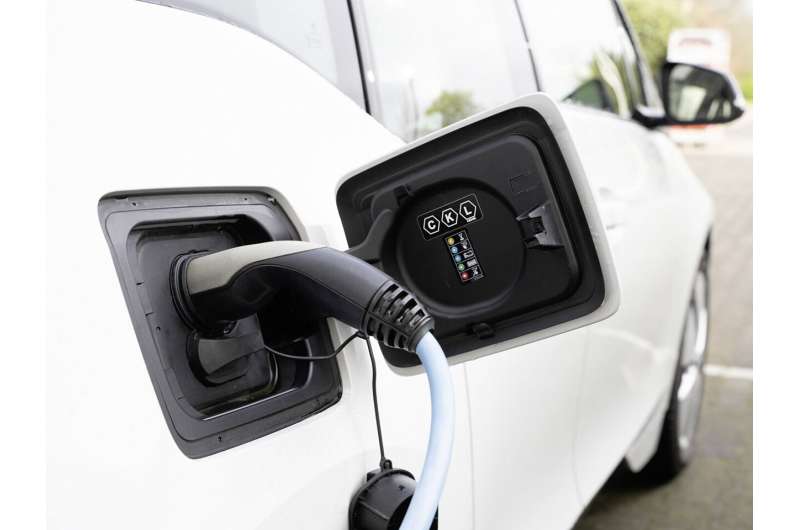This article has been reviewed according to Science X's editorial process and policies. Editors have highlighted the following attributes while ensuring the content's credibility:
fact-checked
peer-reviewed publication
proofread
More environmentally friendly flame retardants for e-mobility and electronics

Organophosphorus flame retardants are a possible alternative to brominated flame retardants. However, comparative life cycle studies on this type of flame retardant are still lacking.
The Fraunhofer Institute for Environmental, Energy, and Safety Technology UMSICHT has now investigated the environmental impact of organophosphorus flame retardants compared to brominated flame retardants in plastic components such as charging plugs for electric cars or USB-C connectors for the first time in a comparative life cycle assessment commissioned by Clariant. Their study is published in ACS Sustainable Chemistry & Engineering.
Brominated flame retardants are currently the most widely used because they are simply very effective—efficient to manufacture, stable at high temperatures, and can be produced cost-effectively. They can be found in various products such as automobiles, electronics, textiles, and furniture. Global consumption of flame retardants is estimated at 2.4 million tons1. More than half of these are used in electrical and electronic applications such as e-mobility.
However, brominated—i.e., halogenated—flame retardants are problematic: they can be detected in soil, water, sewage sludge, or even in wild animals. In addition, toxic emissions are produced when they are burned. There is, therefore, an urgent need for less harmful flame retardants.
Green chemistry
Previous studies have shown that many phosphorus compounds in flame retardant applications are safer and less toxic than brominated flame retardants. However, holistic and quantifying life cycle studies of these flame retardants from cradle to grave have been lacking until now.
On behalf of Clariant, Fraunhofer UMSICHT has now compared the environmental impact of flame-retardant plastics for charging plugs and electronic devices in a life cycle analysis for the first time. At the same time, this analysis is part of a case study for the European Commission in accordance with the "Safe and Sustainable by Design" guideline, which provides for life cycle assessments—and not just toxicity—as an evaluation criterion in the development of chemicals.
The company Clariant markets the investigated flame retardant formulation under the trade name Exolit OP 1400. Exolit OP 1400 contains the flame-retardant diethylphosphinic acid (DEPAL), which requires yellow phosphorus, caustic soda, and calcium hydroxide, among others, for its production.
Lower environmental impact—high potential
The researchers came to the conclusion that the overall environmental impact of Exolit OP 1400 is lower and, therefore, represents a viable alternative to conventional brominated flame retardants in engineering plastics.
"The use of organophosphorus flame retardants such as aluminum diethyl phosphinate (DEPAL) significantly reduces the negative effects on human health and the environment," explains Dr. Daniel Maga, author of the life cycle assessment at Fraunhofer UMSICHT. The main environmental benefit is the conservation of resources, as no antimony trioxide is required, as is the case with brominated formulations.
Antimony has been one of the 14 raw materials classified as critical by the EU since 2010. The CO2 footprint of the phosphorus alternative is only slightly smaller than that of brominated flame retardants, which is mainly due to the energy-intensive extraction of phosphorus from phosphate rock.
However, this could be reduced by using a higher proportion of renewable energies in phosphorus production. Furthermore, the disposal of Exolit OP 1400 is less harmful to the environment and will enable better recycling in the future.
More information: Daniel Maga et al, Toward Sustainable Fire Safety: Life Cycle Assessment of Phosphinate-Based and Brominated Flame Retardants in E-Mobility and Electronic Devices, ACS Sustainable Chemistry & Engineering (2024). DOI: 10.1021/acssuschemeng.3c07096
Journal information: ACS Sustainable Chemistry & Engineering
Provided by Fraunhofer-Institut für Umwelt-, Sicherheits- und Energietechnik UMSICHT




















